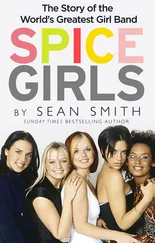A fifth force twining through the first four is technology. Fast global communications facilitate global financial markets and trade. Modern health care and pharmacology are shifting population age structures in the developing world. Advances in biotech, nanotech, and materials science affect demand for different resource stocks. Smart grids, solar panels, and geoengineering might combat climate change, and so on. Under our “No Silver Bullets” rule, technological advances like these are evaluated as enablers or brake pads on the four global forces, rather than as an independent force of its own.
The thought experiment is begun. Its assumptions and ground rules are stated, its four overarching themes defined. Let us turn now to the first subject of scrutiny for the year 2050—ourselves.
CHAPTER 2
A Tale of Teeming Cities
“Tomorrow morning we will release our sales numbers for the month of November.
This event is overshadowed by the tragic death of Jdimytai Damour at our Valley Stream, New York, store on November 28. . . .”
—Statement from the president of the Northeast Division, Walmart USA (December 3, 2008)
Italy, France, United Kingdom, Germany, Japan, and the United States.
—Economies projected by Goldman Sachs to be overtaken by one or more of China, India, Russia, or Brazil before 2050
“From here on out, it’s an urban world.”
—Joel E. Cohen, Professor of Populations, Rockefeller University and Columbia University
It was one o’clock in the morning when Leana Lockley, twenty-eight years old and five months pregnant, lined up with her husband and two family members outside the Green Acres Mall Walmart store in Valley Stream, New York. Whining engines and lights pierced the night as jets came and went from nearby JFK Airport. It was November 28, 2008, the day following Thanksgiving called “Black Friday,” the busiest American shopping day of the year. The global economy was crashing, everyone was looking for bargains, and Walmart was cutting its prices for six hours only. By the time the store opened at five o’clock a.m. there were two thousand people crowded restlessly against the glass storefront, waiting to get in.
The doors unlocked and people surged forward. Lockley was literally picked up off her feet and carried through the door opening. There were loud cracking noises as hinges broke off, and the sounds of crashing glass. An older woman fell. Lockley tried to pick her up but was knocked to her knees. A large man saw her and tried to help. “He was facing the crowd, and he had his hands up, trying to push them back in order for me to escape,” she later recounted on Fox News. “He was trying to block the people from pushing me to the ground and trampling me . . . he was on his knees, I could look at him eye to eye, and he was trying to push them back and then the crowd pushed him down, and he fell on top of me.” 44His body covering hers, hundreds of deal-hungry shoppers stomped and shoved over them and streamed into the store.
Lockley and her unborn daughter survived, as did three other injured shoppers sent to area hospitals. But the man who saved her life, thirty-four-year-old Jdimytai Damour, was killed. As paramedics attempted to resuscitate him, shoppers continued to jostle past; then became irate when officials announced the store was being closed.
The only son of Haitian immigrants, Jdimytai Damour was a very large but gentle man who enjoyed watching football and talked about being a teacher one day. The reason he was there that morning was not to buy, but to work. Because of his size—he was six feet five inches tall and weighed 270 pounds—he had been assigned to the front door. But he wasn’t a trained security officer. He was a temporary worker, a subcontractor, hired by Walmart to help them help us to consume more stuff during the busiest retail season of the year.
Far less tragic—and certainly less attention-grabbing—was a second, very profound event that also happened in 2008. Its exact timing will never be known, but at some instant during the year, the number of people living in urban areas grew to briefly match, for a few seconds, the number of people living in rural areas. Then, somewhere, a city baby was born. From that child forward, for the first time in our history, the human race became urban in its majority.
For the first time ever, we have more people living in cities than out on the land. For the first time, most of us have no substantive ability to feed or water ourselves. We have become reliant upon technology, trade, and commerce to carry out these most primitive of functions. Sometime in 2008, the human species crossed the threshold toward becoming a different animal: an urban creature, geographically divorced from the natural world that still continues to feed and fuel us.
What does the awful death of Jdimytai Damour have to do with our transformation to an urban race? Aside from occurring in the same year, what connection may be drawn between these two events?
From a macroeconomic perspective, the frenzied horde that killed poor Mr. Damour was, in its own mindless way, helping to build cities all over the world. Most of the items for sale in the Valley Stream Walmart were made overseas, by urban workers in the hundreds of Asian towns and cities churning out the cell phones, flat-screen televisions, netbooks, and other essentials of twenty-first-century life. Cities around the world have participated in the process of getting those products onto Walmart’s shelves.
A global supply web was needed to transfer the raw materials and components to manufacturing hubs like Shenzhen, Dongguan, Guangzhou, and Bangalore. Then, the finished goods were sent to the United States, very likely in freighters and steel shipping containers built in places like Geoje (South Korea), Nagasaki (Japan), and Ningbo (China). These vessels were unloaded in the American ports of Long Beach or Los Angeles before being trucked east to Gloucester City, New Jersey, for redistribution. From there, they were trucked once again to Valley Stream, New York. Financial transactions between New York City and Hong Kong, as well as Chicago, Tokyo, London, Paris, Frankfurt, Singapore, and Seoul were taking place. So every time a new flat-screen TV is sold by Walmart, urban agglomerations around the globe all win another little economic boost.
These invisible ties across the globe hum, the economic wheels turn. Consumption fuels commerce, thus growing cities, further enlarging the overall consumer base. 45The urban economy grows—as it must, to support its growing number of residents and the many services they now require. Salaries rise such that even menial entry-level jobs pay better than a farm-worker’s wages.
The reason that the world’s rural people are moving into cities is that they can make more money in town. This is partly because of the described growth of urban economies, and partly because demand for farm labor falls as agriculture commercializes, mechanizes, and becomes export-oriented. Worldwide employment in agriculture is falling fast and in 2006, for the first time ever, it was surpassed by employment in the services sector. 46And because every new urban resident is also a new urban consumer, the cycle is self-reinforcing. More urbanites buy more electronics, services, and imported processed food, prepared and served to them by others. More entry-level jobs for new migrants are created. More managerial posts are needed. Ladders rise and the urban economy grows . 47
This urban shift is driving major demographic changes around the globe. City dwellers are projected to roughly double in number by 2050, rising from 3.3 billion in 2007 to 6.4 billion in 2050. 48However, the geography of this is not uniform. Urban majorities came to Europe and America decades ago, in the 1960s, 1950s, or even sooner. These places are already more than 70% urban today. This new trend is most dramatic in the developing world, especially Asia and Africa, the most populous places on Earth.
Читать дальше












